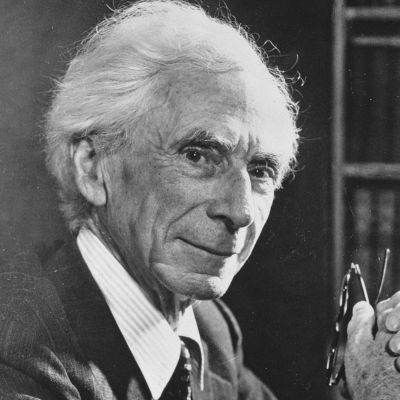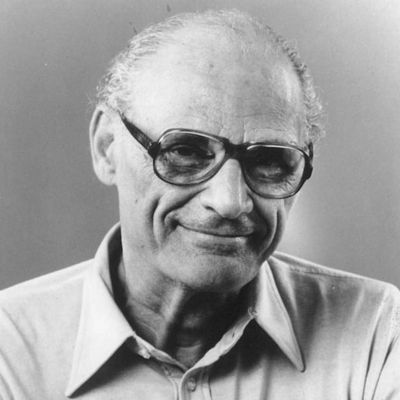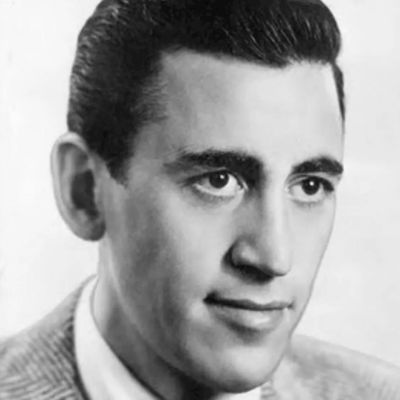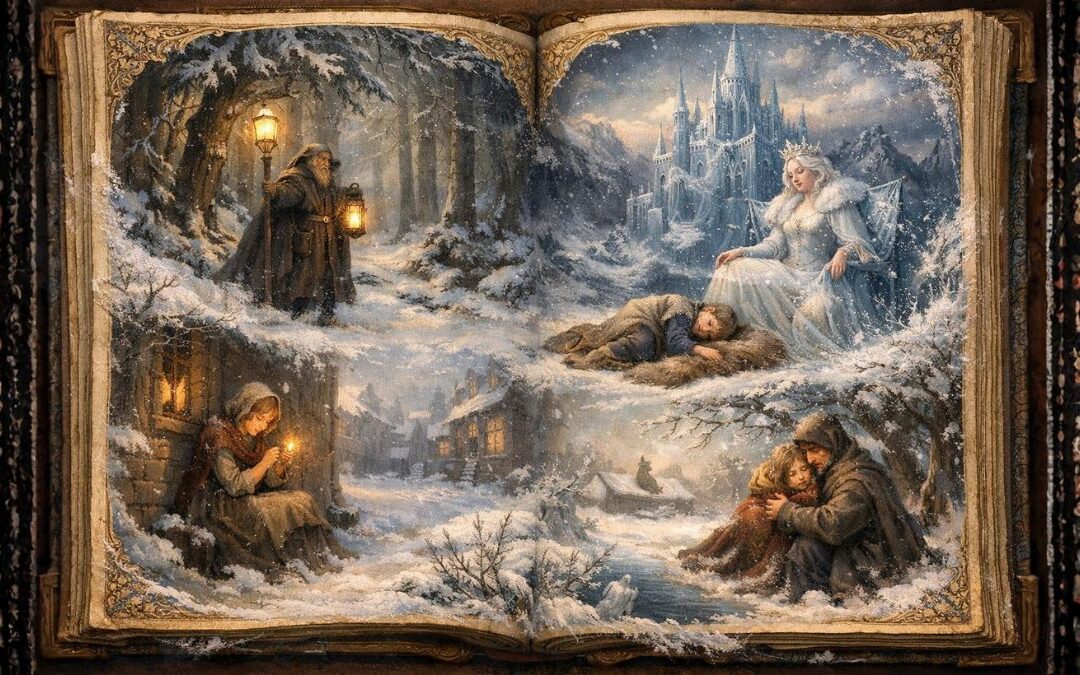- Ernest Hemingway: Examining His Unique Writing Style and Influential Works
- The Hemingway Style: The Iceberg Theory
- Use of Dialogue
- Hemingway Code Hero
- Influential Works
- Impact on Literature
- Conclusion
- Keywords:
- Key Takeaways:
- You Might Still be Wondering about…
- How does Hemingway’s minimalist writing style contribute to the impact of his narratives?
- In what ways does the Iceberg Theory enhance the reader’s engagement with Hemingway’s works?
- How does Hemingway’s use of dialogue contribute to the authenticity of his characters?
- What are the defining characteristics of a Hemingway Code Hero? How do these characters reflect Hemingway’s worldview?
- What makes “The Old Man and the Sea” a timeless literary masterpiece? How does it exemplify Hemingway’s writing style and themes?
- What role does love play in Hemingway’s works, particularly in “A Farewell to Arms” and “The Sun Also Rises”?
- How does Hemingway explore the concept of war and its impact on individuals in his novels?
- Discuss the influence of the Lost Generation on Hemingway’s works and its significance in understanding his portrayal of post-war disillusionment.
- How do Hemingway’s works challenge traditional notions of masculinity?
- Why do Hemingway’s novels continue to resonate with readers and inspire contemporary writers?
- Common Misconceptions
- Hemingway’s writing is too simplistic and lacks depth.
- Hemingway’s characters are one-dimensional and lack emotional depth.
- Hemingway glorifies war and violence in his works.
- Hemingway’s portrayal of women is limited and lacks depth.
- Hemingway’s minimalist style is easy to imitate or replicate.
- The Hemingway Code Hero represents an idealized version of masculinity.
- Hemingway’s characters lack depth because they don’t engage in introspection.
- Hemingway’s works are outdated and irrelevant to contemporary readers.
- Hemingway’s novels are only about masculine pursuits such as fishing, hunting, and war.
- Hemingway’s novels are exclusively for literary elitists and not accessible to the general reader.
- What They Say about Hemingway
Ernest Hemingway: Examining His Unique Writing Style and Influential Works
Ernest Hemingway, born on July 21, 1899, in Oak Park, Illinois, emerged as one of the most influential writers of the twentieth century. His novels and short stories, characterized by his distinctive writing style—terse, sparse, and devoid of excess—revolutionized the landscape of American literature. This article aims to delve into the unique writing style of this literary titan and provide an analysis of his influential works that cemented his immortality in the literary world.
The Hemingway Style: The Iceberg Theory
Hemingway’s writing style can be described as lean, hard, athletic, and devoid of excessive language. His narratives often use a simple vocabulary and short sentences that mirror the philosophy behind his ‘Iceberg Theory.’ Hemingway stated, “If a writer knows enough about what he is writing about, he may omit things that he knows, and the reader, if the writer is writing truly enough, will have a feeling of those things.”
His Iceberg Theory, also known as the theory of omission, is a writing technique that suggests the deeper meaning of a story should not be evident on the surface but should shine through implicitly. It is the hidden 7/8ths of the iceberg under the water that holds the story’s substance, leaving the reader to unearth and appreciate the underlying themes. The theory was a reaction against the 19th-century style of describing the world in minute detail; instead, Hemingway offered only the ‘tip of the iceberg,’ encouraging the reader to perceive what’s hidden beneath the surface.
Use of Dialogue
Another characteristic feature of Hemingway’s writing is his adept use of dialogue. His characters communicate in a realistic, often colloquial language, revealing their personalities and emotions subtly, without direct authorial intervention. This narrative technique, which creates an illusion of real people talking, further reinforces the Iceberg Theory, leaving much unsaid for the readers to infer.
Hemingway Code Hero
Hemingway’s works frequently feature a particular type of protagonist known as the ‘Hemingway Code Hero.’ These characters are often stoic men who exhibit grace under pressure, embrace physical and mental challenges, and adhere to their personal code of honor. They live in the existential world, focusing on tangible experiences and shying away from abstract thought or discussion about the meaning of life. The Code Hero, through his actions, embodies Hemingway’s beliefs about the nature of courage, honor, and endurance.
Influential Works
- The Old Man and the Sea (1952): This novella, one of Hemingway’s most famous works, earned him the Pulitzer Prize for Fiction in 1953 and significantly contributed to his Nobel Prize in Literature in 1954. The story of Santiago, an old Cuban fisherman battling a giant marlin, beautifully showcases Hemingway’s iceberg theory. The simple, austere narrative surface belies the profound themes of human courage, endurance, and the relentless struggle against natural forces.
- A Farewell to Arms (1929): Set during World War I, this novel showcases the trauma and disillusionment of war through the eyes of Frederic Henry, an American ambulance driver in the Italian army. The tragic love story between Henry and Catherine Barkley, a British nurse, underlines the futility of war and the fragility of human life. The novel’s hauntingly poignant ending underscores Hemingway’s view of life as a tragic experience, ruled by arbitrary and cruel forces.
- The Sun Also Rises (1926): Known as Hemingway’s quintessential novel, it presents the ‘Lost Generation’ disillusioned by World War I. The narrative, filled with vibrant dialogue and a compelling plot, explores themes of love, masculinity, and the purposeless life of the expatriate community in post-war Europe. The characters are caught in a cycle of aimless drinking and partying, embodying the moral and spiritual bankruptcy of the age.
- For Whom the Bell Tolls (1940): Based on Hemingway’s experiences in the Spanish Civil War, the novel explores themes of love, death, and the brutality of war. The protagonist, Robert Jordan, embodies the Hemingway Code Hero, showcasing bravery, practicality, and a stoic acceptance of his fate.
Impact on Literature
Hemingway’s unique style and approach to storytelling greatly influenced modern literature. His Iceberg Theory inspired authors to lean towards subtlety, leaving much to the reader’s imagination. His use of dialogue set a new standard in the creation of realistic, believable characters. Moreover, his ability to evoke emotion through minimalistic prose influenced the next generations of writers.
Conclusion
Ernest Hemingway was indeed a master of the written word. His evocative narratives, characterized by a distinctive, pared-down style and profound underlying themes, have ensured his place in the pantheon of literature’s immortals. Hemingway’s indelible influence continues to resonate in the literary world, affirming the timeless relevance of his works.
Through an examination of Hemingway’s writing style and influential works, we gain an understanding of his innovative approach to storytelling. Hemingway’s legacy endures, a testament to his unique vision, and remains an enduring inspiration to writers and readers worldwide. His writings continue to fascinate, provoke, and inspire, preserving his immortality in the world of literature.
Keywords

- Ernest Hemingway: An influential American writer known for his unique writing style and profound works. Hemingway’s minimalist approach and themes of courage, masculinity, and the human condition have left an indelible mark on literature.
- Writing Style: The distinctive manner in which an author expresses their ideas and narratives. Hemingway’s writing style is characterized by simplicity, brevity, and the use of the Iceberg Theory to convey deeper meanings.
- Iceberg Theory: Hemingway’s writing technique that suggests the deeper meaning of a story should be subtly implied rather than explicitly stated. It emphasizes the importance of omission and allows readers to uncover underlying themes.
- Dialogue: The conversation between characters in a literary work. Hemingway’s adept use of dialogue adds realism and depth to his characters, enabling readers to infer their personalities and emotions.
- Hemingway Code Hero: A recurring character archetype in Hemingway’s works who embodies stoicism, courage, and adherence to personal principles in the face of adversity. These characters often live in an existential world and prioritize tangible experiences over abstract contemplation.
- The Old Man and the Sea: Hemingway’s Pulitzer Prize-winning novella that portrays the struggles of an aging fisherman as he battles against nature and his own inner demons. It explores themes of courage, endurance, and the human spirit.
- A Farewell to Arms: Hemingway’s novel set during World War I, which follows the journey of an American ambulance driver and his tragic love affair with a British nurse. It delves into the devastating impact of war and the fleeting nature of human existence.
- The Sun Also Rises: A novel often considered Hemingway’s definitive work, capturing the disillusionment of the Lost Generation in post-World War I Europe. It explores themes of love, masculinity, and the aimless existence of expatriates.
- For Whom the Bell Tolls: Hemingway’s novel based on the Spanish Civil War, featuring a protagonist who embodies the Hemingway Code Hero. It delves into the brutality of war, the complexities of love, and the existential struggle for meaning.
- Influence on Literature: Hemingway’s lasting impact on the literary world, inspiring subsequent generations of writers to adopt his minimalist style, realistic dialogue, and exploration of profound themes.
Key Takeaways

- Ernest Hemingway revolutionized literature with his unique writing style, characterized by simplicity, brevity, and the use of the Iceberg Theory.
- Hemingway’s works, such as “The Old Man and the Sea,” “A Farewell to Arms,” “The Sun Also Rises,” and “For Whom the Bell Tolls,” showcase his distinct style and explore universal themes of courage, love, war, and the human condition.
- The Iceberg Theory encourages readers to delve deeper and uncover the underlying themes and messages within Hemingway’s narratives.
- Hemingway’s adept use of dialogue adds authenticity and depth to his characters, allowing readers to infer their personalities and emotions.
- The Hemingway Code Hero, often embodied by stoic and courageous protagonists, reflects Hemingway’s beliefs about honor, bravery, and endurance in the face of adversity.
- Hemingway’s works continue to influence modern literature, inspiring writers to embrace minimalism, realistic dialogue, and exploration of profound themes.
- “The Old Man and the Sea” earned Hemingway the Pulitzer Prize for Fiction and significantly contributed to his Nobel Prize in Literature.
- Hemingway’s novels, set against the backdrop of war and post-war disillusionment, portray the fragility of human life and the futility of conflict.
- The Lost Generation, disillusioned by the aftermath of World War I, is a recurring theme in Hemingway’s works.
- Hemingway’s writings offer insights into the human experience, addressing existential questions and emphasizing the significance of living authentically.
You Might Still be Wondering about…

How does Hemingway’s minimalist writing style contribute to the impact of his narratives?
Hemingway’s minimalist writing style, characterized by simplicity, brevity, and omission, plays a crucial role in the impact of his narratives. By stripping away unnecessary details and using concise language, Hemingway creates a sense of immediacy and intensity. The spare prose allows readers to focus on the essential elements of the story, evoking a strong emotional response. Hemingway’s sparse descriptions often leave gaps for readers to fill, actively engaging them in the storytelling process. This participatory approach enables readers to develop a personal connection with the characters and themes, making the impact of the narrative more profound and lasting.
In what ways does the Iceberg Theory enhance the reader’s engagement with Hemingway’s works?
The Iceberg Theory, also known as the theory of omission, invites readers to dig beneath the surface of Hemingway’s narratives and discover the underlying depth and complexity. By presenting only the “tip of the iceberg,” Hemingway leaves much unsaid, requiring readers to actively interpret and infer the submerged themes and meanings. This engagement deepens the reader’s involvement in the story, fostering a sense of discovery and personal connection. The Iceberg Theory encourages readers to become active participants, filling in the gaps with their own experiences, emotions, and perspectives. This interactive reading experience creates a stronger bond between the reader and the text, making Hemingway’s works resonate on a deeper level.
How does Hemingway’s use of dialogue contribute to the authenticity of his characters?
Hemingway’s adept use of dialogue adds authenticity and depth to his characters, making them come alive on the page. Through realistic and often colloquial speech, Hemingway captures the nuances of human conversation, revealing the personalities, motivations, and emotions of his characters. Instead of relying on lengthy descriptions or authorial commentary, Hemingway allows the characters to express themselves through their words and interactions. This approach creates a sense of immediacy and intimacy, enabling readers to connect with the characters as if they were real people. Hemingway’s dialogue-driven narratives contribute to the authenticity of his characters, making them relatable and memorable.
What are the defining characteristics of a Hemingway Code Hero? How do these characters reflect Hemingway’s worldview?
The Hemingway Code Hero is a recurring character archetype in Hemingway’s works. These characters exhibit specific characteristics that reflect Hemingway’s worldview and values. The defining traits of a Hemingway Code Hero include stoicism, courage, grace under pressure, self-reliance, adherence to personal principles, and a pursuit of authentic experiences. These characters often face adversity, be it in war, wilderness, or personal relationships, and navigate through challenges with resilience and integrity.
Hemingway’s Code Heroes are driven by a sense of honor, exhibiting bravery and endurance in the face of adversity. They prioritize action and experience over introspection and philosophical contemplation. By emphasizing the importance of physical and mental fortitude, Hemingway presents a vision of masculinity centered around strength, independence, and self-determination. The Code Heroes reflect Hemingway’s belief in the significance of personal integrity, courage, and the pursuit of authenticity in a chaotic and uncertain world.
What makes “The Old Man and the Sea” a timeless literary masterpiece? How does it exemplify Hemingway’s writing style and themes?
“The Old Man and the Sea” is considered a timeless literary masterpiece for several reasons. Firstly, it exemplifies Hemingway’s distinct writing style. The novella showcases his minimalist prose, using simple language and concise sentences that mirror the spare and harsh beauty of the story’s setting. The narrative encapsulates Hemingway’s Iceberg Theory, where the surface simplicity belies the profound themes beneath.
The story’s themes of courage, endurance, and the indomitable human spirit resonate with readers across generations. Santiago, the old Cuban fisherman, embodies the Hemingway Code Hero, displaying grace under pressure and an unwavering determination to battle against the forces of nature. The novella explores the human struggle against the inevitability of life’s hardships and the search for meaning in the face of adversity. The universal themes, combined with Hemingway’s evocative storytelling, make “The Old Man and the Sea” a masterpiece that transcends time and continues to captivate readers.
What role does love play in Hemingway’s works, particularly in “A Farewell to Arms” and “The Sun Also Rises”?
Love is a recurring theme in Hemingway’s works, and it often takes on complex and sometimes tragic dimensions. In “A Farewell to Arms,” love is portrayed as a fragile and fleeting force that exists in the midst of war’s chaos. The love story between Frederic Henry and Catherine Barkley represents an escape from the harsh reality of war and a desire for connection and meaning in a chaotic world. However, their love is ultimately shattered by the cruel and arbitrary nature of fate.
In “The Sun Also Rises,” love is depicted as elusive and unattainable, mirroring the disillusionment of the Lost Generation. The characters engage in a cycle of empty relationships and unrequited love, searching for meaning and fulfillment but ultimately finding themselves trapped in a cycle of aimlessness. Love becomes a symbol of the characters’ longing for something authentic and meaningful, but it remains just out of reach.
In both novels, Hemingway explores the complexities of love, highlighting its power to both elevate and destroy individuals. Love becomes a lens through which characters grapple with their own desires, vulnerabilities, and the broader existential questions raised in Hemingway’s works.
How does Hemingway explore the concept of war and its impact on individuals in his novels?
War and its impact on individuals are central themes in Hemingway’s novels. He delves into the physical and psychological toll that war exacts on the human spirit. Through vivid and visceral descriptions, Hemingway portrays the brutality, chaos, and senselessness of war. He emphasizes the devastating consequences it has on individuals, their relationships, and their worldview.
In works like “A Farewell to Arms” and “For Whom the Bell Tolls,” Hemingway presents war as a catalyst for disillusionment, loss, and the destruction of innocence. He explores the physical and emotional wounds that soldiers carry long after the battles have ended. Hemingway’s characters often face moral dilemmas and grapple with the existential questions raised by war’s brutality.
Moreover, Hemingway challenges romanticized notions of heroism and glory in war. Instead, he presents war as a dehumanizing force that erodes individuality and exposes the fragility of the human condition. Hemingway’s exploration of war’s impact underscores the futility of conflicts and highlights the indomitable spirit of those who endure.
Discuss the influence of the Lost Generation on Hemingway’s works and its significance in understanding his portrayal of post-war disillusionment.
The Lost Generation, a term coined by Gertrude Stein, refers to the group of writers and artists who came of age during World War I and experienced disillusionment and alienation in the post-war era. Hemingway, as a prominent member of the Lost Generation, drew inspiration from their experiences and captured their collective sense of disillusionment in his works.
Hemingway’s portrayal of post-war disillusionment is characterized by a profound sense of aimlessness, moral ambiguity, and a search for meaning. His characters, often expatriates living in Europe, are adrift in a world that feels devoid of purpose. Through their actions, conversations, and internal struggles, Hemingway depicts the fractured identities and existential crises faced by those who survived the war.
The Lost Generation’s experiences of war, witnessing the destruction of traditional values and the loss of a sense of identity, influenced Hemingway’s exploration of themes such as disillusionment, existential angst, and the search for authenticity. Hemingway’s works serve as a mirror to the disenchanted post-war era and offer poignant insights into the challenges faced by a generation grappling with the aftermath of a devastating conflict.
How do Hemingway’s works challenge traditional notions of masculinity?
Hemingway’s works are often associated with a rugged and hypermasculine image. However, a closer examination reveals that his portrayal of masculinity challenges traditional notions and presents a more complex understanding of gender roles.
Hemingway’s male characters exhibit vulnerability, struggle with their emotions, and confront their own limitations. While they may embody physical strength and courage, they also grapple with fear, doubt, and inner conflicts. The Hemingway Code Hero, for example, emphasizes qualities such as grace under pressure, integrity, and adherence to personal principles rather than adhering to narrow stereotypes of invulnerability.
Through his portrayal of female characters, Hemingway challenges traditional gender roles as well. His women are often strong, independent, and assertive, subverting the traditional damsels-in-distress trope. They assert their desires, challenge societal expectations, and demonstrate agency in their relationships.
By depicting the complexities and vulnerabilities of both male and female characters, Hemingway offers a nuanced exploration of gender dynamics, encouraging readers to question and reassess traditional notions of masculinity and femininity.
Why do Hemingway’s novels continue to resonate with readers and inspire contemporary writers?
Hemingway’s novels continue to resonate with readers and inspire contemporary writers for several reasons. First, his minimalist writing style and the Iceberg Theory offer a distinctive and impactful reading experience. The economy of language, the emphasis on omission and inference, and the ability to evoke deep emotions with a few carefully chosen words create a lasting impression on readers.
Furthermore, Hemingway’s exploration of universal themes such as love, war, courage, and the human condition transcends time and place. The struggles and existential questions faced by his characters are relatable across different eras and cultures. Hemingway’s ability to capture the essence of the human experience and distill it into powerful narratives ensures the continued relevance of his works.
Moreover, Hemingway’s complex characters, with their flaws, vulnerabilities, and pursuit of authenticity, offer a rich tapestry of human psychology. They remain enduring and relatable figures, inviting readers to reflect on their own lives and values.
Contemporary writers find inspiration in Hemingway’s approach to storytelling, his minimalist style, and his exploration of profound themes. His influence can be seen in the works of authors who strive for clarity, authenticity, and a deep emotional impact through their writing.
Overall, Hemingway’s ability to evoke powerful emotions, his exploration of universal themes, and his enduring relevance contribute to his novels’ continued resonance with readers and their enduring influence on contemporary literature.
Common Misconceptions

Hemingway’s writing is too simplistic and lacks depth.
Reality: While Hemingway’s prose may appear simple on the surface, it is precisely this simplicity that allows for a deeper exploration of complex themes. His concise and precise language forces readers to engage actively with the text, uncovering underlying layers of meaning. Hemingway’s depth lies in what is unsaid, in the subtleties and nuances conveyed through his sparse prose.
Hemingway’s characters are one-dimensional and lack emotional depth.
Reality: Hemingway’s characters may not explicitly reveal their emotions through introspection, but their emotional depth is conveyed through their actions, choices, and interactions with others. Hemingway’s minimalist style encourages readers to interpret and infer emotions, allowing for a more immersive and participatory reading experience. The restraint in emotional expression adds to the complexity of the characters, creating a deeper understanding of their inner lives.
Hemingway glorifies war and violence in his works.
Reality: Hemingway’s portrayal of war is far from glorification. While his narratives capture the intensity and chaos of warfare, they also depict its devastating consequences. Hemingway presents the physical and psychological toll that war takes on individuals, showing the destruction and futility it brings. His works question the morality and purpose of war, often emphasizing the human suffering and the loss of innocence it entails.
Hemingway’s portrayal of women is limited and lacks depth.
Reality: While Hemingway’s male characters often take center stage, his portrayal of women challenges traditional gender roles and stereotypes. His female characters, such as Brett Ashley in “The Sun Also Rises” or Catherine Barkley in “A Farewell to Arms,” are complex and independent. They assert their desires, challenge societal expectations, and possess agency in their relationships. Hemingway’s exploration of women’s struggles and desires adds depth to his portrayals and defies one-dimensional stereotypes.
Hemingway’s minimalist style is easy to imitate or replicate.
Reality: Hemingway’s minimalist style is deceptively difficult to master. It requires a deep understanding of language, precise word choice, and an ability to convey meaning through restraint and omission. Achieving the impact of his prose while maintaining clarity and resonance is a delicate balance that requires skill and craftsmanship. Hemingway’s style is unique and distinctive, and successful imitation requires a profound appreciation for the underlying principles and mastery of the craft of writing.
The Hemingway Code Hero represents an idealized version of masculinity.
Reality: The Hemingway Code Hero is not an idealized or perfect representation of masculinity. While they exhibit traits such as courage, honor, and self-reliance, Hemingway’s characters also struggle with their own flaws, vulnerabilities, and limitations. The Code Hero grapples with existential questions and the complexities of human nature. Hemingway’s portrayal of masculinity is multifaceted, encompassing both strength and fragility, and challenging simplistic notions of what it means to be a man.
Hemingway’s characters lack depth because they don’t engage in introspection.
Reality: Hemingway’s characters reveal their depth through their actions and interactions with others, rather than through explicit self-reflection. The absence of excessive introspection allows readers to draw their own conclusions and interpretations. Hemingway’s characters embody a form of stoicism, processing their emotions through physical experiences and external challenges, leading to a deeper understanding of their inner lives.
Hemingway’s works are outdated and irrelevant to contemporary readers.
Reality: Hemingway’s exploration of timeless themes such as love, courage, existentialism, and the human condition ensures the continued relevance of his works. The universal nature of his themes, combined with his masterful storytelling and unique style, transcends the boundaries of time. Hemingway’s works continue to resonate with contemporary readers, offering insights into the complexities of the human experience that are applicable across generations.
Hemingway’s novels are only about masculine pursuits such as fishing, hunting, and war.
Reality: While Hemingway’s works often feature traditionally masculine activities, they are not limited to them. Hemingway uses these pursuits as a backdrop to explore broader themes of identity, purpose, and the human condition. The activities serve as metaphors for larger existential questions and allow Hemingway to delve into the complexities of human nature, relationships, and the search for meaning.
Hemingway’s novels are exclusively for literary elitists and not accessible to the general reader.
Reality: Hemingway’s clear and concise writing style, coupled with his universal themes, makes his works accessible to readers of all backgrounds. While his narratives may require active engagement and interpretation, they offer a rich and rewarding reading experience. Hemingway’s works have found a wide audience across generations, appealing to both literary scholars and general readers alike.
What They Say about Hemingway


“Hemingway captures the essence of being human and facing the world with courage and dignity.”

“Hemingway was the first real American writer who challenged me to attempt such a thing: the portrayal of a consciousness. He has no equal.”

“He is one of those who, honestly and undauntedly, has looked into the world of today and told the truth.”

“Hemingway’s works are like a clean, well-lighted place. They offer a clarity and simplicity that resonate deeply with readers.”

“Hemingway had an extraordinary ability to capture the truth of the human condition with a few perfectly chosen words.”

“He was the master of the minimalistic approach, saying more with silence than others could with a thousand words.”

“Hemingway’s prose is like a finely tuned instrument. It has a rhythm and power that leaves an indelible mark on the reader.”

“Hemingway’s influence on modern literature is immeasurable. He paved the way for a new style of writing, one that focused on economy, honesty, and authenticity.”

“Hemingway’s characters are alive on the page, flawed and complex, navigating the depths of the human psyche with remarkable precision.”

“Hemingway’s impact on the craft of writing is immeasurable. His stripped-down prose and focus on the essentials have shaped generations of authors.”

“Hemingway’s writing is like a punch to the gut. It hits you with raw emotion and unflinching honesty.”

“Hemingway’s works capture the essence of what it means to be human, exploring themes of love, loss, and the struggle for meaning in a chaotic world.”











0 Comments